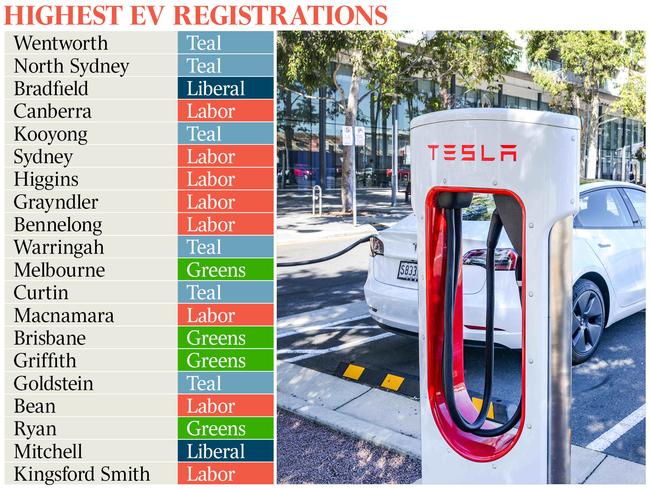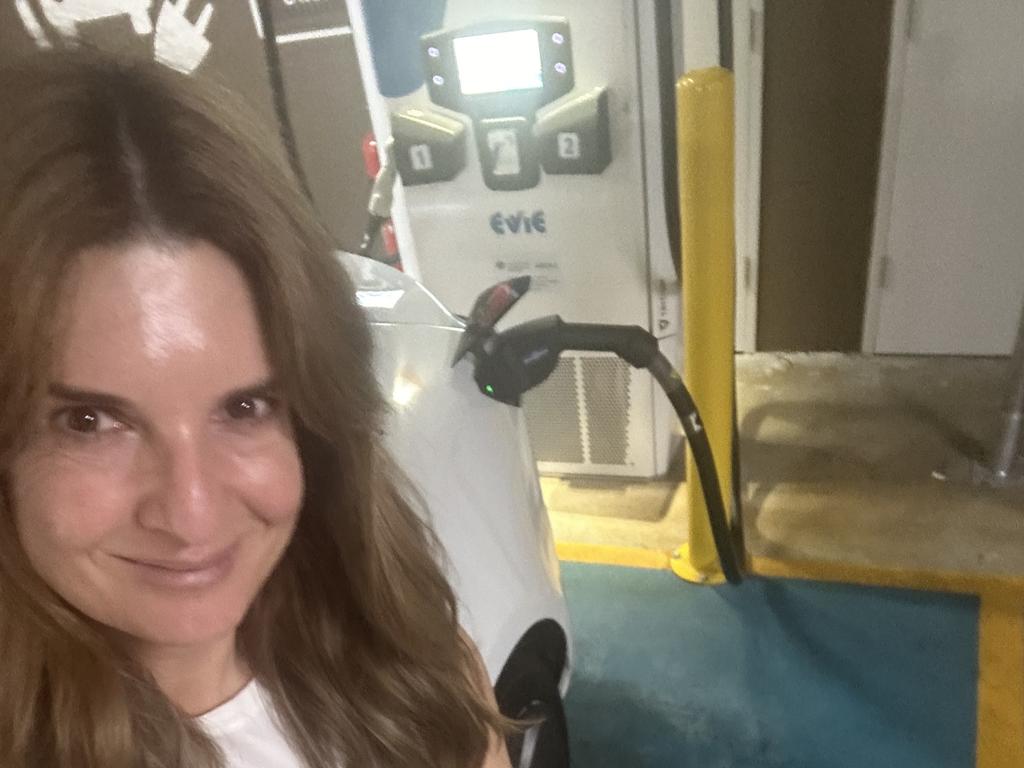EV political battlelines: the electorates where voters buy or shun electric vehicles
Electric vehicles have had highest take-up in Greens, teal independent, and Labor-held inner-city electorates, raising questions about how the major parties will position themselves to woo suburban voters | FULL LIST

Electric vehicles’ highest take-up has been in Greens, teal and Labor-held inner-city electorates but petrol cars reign supreme in the outer suburban and regional seats Peter Dutton is targeting at the next election.
Despite the Albanese government offering financial incentives for EV purchases, battery car sales declined by 25 per cent in the September quarter to 18,990.
The EV market share of new car purchases fell from 8 per cent in the June quarter to 6.57 per cent in September, the lowest level since 2022.
Hybrid cars – which next year will no longer qualify for tax incentives – bucked the trend of declining car sales by rising more than 3 per cent.
With the Coalition opposed to Labor’s EV strategy, analysis by The Australian shows battery car uptake is particularly low in regional and outer suburban seats.
Car registration data from 2023 showed 1.5 per cent of all cars in the affluent teal electorate of Wentworth, in Sydney, were electric, the highest in Australia.
Of the 20 top seats by EV penetration, only two are held by Liberals, four by the Greens, six by teal independents, and eight by Labor.

The analysis was conducted by merging postcodes and electorates – whose boundaries do not always line up perfectly, but nonetheless provides a reasonably accurate picture of the proliferation of EVs and the electoral implications.
On the other side of the ledger from those inner-city seats are traditionally Labor-held, working-class seats the Coalition may try to pick off at the next election.
The Weekend Australian reported that Coalition figures were seeking briefings with US Republican strategists about the Donald Trump win, the early signs of which suggested a continued alignment of the working class with the conservative side of politics.
For example, in Hunter, north of Sydney – which has been held by Labor since 1910 but by smaller and smaller margins – EVs made up 0.2 per cent of registrations, which placed Hunter 112th of 151 electorates.
Lyons in Tasmania, where Peter Dutton was campaigning on Sunday, has been held by Labor since 1993 except a three-year Liberal term after the 2013 election. EVs made up 0.19 per cent of car registrations, placing it 116th.
Other Labor-held provincial and rural seats – such as McEwen in Victoria, Gilmore and Paterson in NSW, and Blair in Queensland – also have low EV take-up rates and sit in the bottom half of all electorates.
On the other hand, the metropolitan seat of Canberra, held by Labor’s Alicia Payne, had a 1.12 per cent EV penetration rate, the fourth-highest in the country. And Anthony Albanese’s own inner western Sydney electorate of Grayndler ranked eighth highest in the country at 1 per cent.
The only Liberal-held seats in the top 20 are Bradfield in northern Sydney, at 1.23 per cent, and Mitchell in Sydney’s Hills district, at 0.75 per cent.
Teal seats such as Wentworth, North Sydney, Kooyong and Warringah were in the top 10.
The Albanese government has been rolling out policies to increase EV uptake by, in part, making it cheaper to get one. For example, the government this year announced its fuel efficiency standard, which would penalise carmakers for selling too many high-emissions cars.
The Coalition at the time warned this would raise the price of utes, while Labor said the move would expand consumer choice.
Electric vehicle purchasers also enjoy benefits such as an exemption from the fringe benefits tax.
This exemption applies to both hybrid and electric vehicles but will no longer be the case for most hybrid cars from July 1, 2025.





To join the conversation, please log in. Don't have an account? Register
Join the conversation, you are commenting as Logout